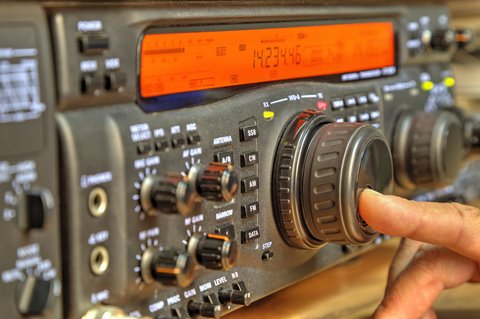This post was originally published on May 15, 2023
The latest update to this post was made 10 months ago.
 Ham Radio LSB, DSB And USB Modes
Ham Radio LSB, DSB And USB Modes
What are ham radio modes?
Ham radios, also known as amateur radios, are communication devices that are used for non-commercial purposes. These radios allow individuals to communicate with each other over long distances without the need for cell towers or internet connection. Ham radio operators use a variety of transmission modes such as SSB (Single Sideband), AM (Amplitude Modulation), and FM (Frequency Modulation) to exchange information.
- One of the modes used in ham radio communication is LSB (Lower SideBand). In this mode, half of the signal’s power is transmitted below the carrier frequency while the other half is transmitted above it. This results in efficient use of bandwidth and allows more signals to be sent on a single frequency range.
- Another mode commonly used by ham radio operators is DSB (Double SideBand). In this mode, both sidebands of an AM signal are transmitted along with the carrier wave resulting in higher quality audio compared to single sideband transmissions. However, DSB transmissions require twice as much bandwidth as SSB transmissions which makes it less practical for crowded frequencies.
- Lastly, USB (Upper SideBand) is another popular mode among ham radio operators. Similar to LSB, it transmits half of its power above and below the carrier frequency but in opposite directions. This results in a flipped spectrum where higher frequencies appear lower and vice versa allowing for easier tuning and clearer signals.
Understanding LSB and USB modes
In the world of Ham Radio, LSB and USB are two of the most commonly used modes for transmitting voice. LSB refers to Lower Sideband, while USB stands for Upper Sideband. The main difference between the two is their frequency range. With LSB, signals below the carrier frequency are transmitted, while with USB, signals above it are transmitted.
When it comes to choosing between LSB and USB, several factors come into play. For instance, in crowded band conditions, LSB may be preferred because it allows for more channels to fit within a given bandwidth than USB. On the other hand, if you are looking for clearer audio transmissions with less noise distortion on high frequencies such as voice or music then you might choose USB mode.
It’s important to note that both modes have their own advantages and disadvantages depending on varying factors such as atmospheric conditions and receiving equipment among others. As such there is no one-size-fits-all solution when it comes to choosing which mode to use during transmission but understanding how they work can help make better decisions based on each situation’s unique circumstances.
What is Double Sideband (DSB) mode?
Double Sideband (DSB) is a type of modulation used in ham radio communication. It is a form of amplitude modulation that employs two sidebands surrounding the carrier frequency, each carrying an identical copy of the modulating signal. The advantage with DSB over other forms of AM is its efficiency in transmitting signals without redundancy.
DSB can be further categorized into two types: full-carrier and suppressed-carrier. In full-carrier DSB, both sidebands are transmitted along with the carrier signal. Suppressed-carrier DSB, on the other hand, eliminates one sideband and the carrier wave from transmission, reducing bandwidth requirements by half.
While Double Sideband (DSB) has its advantages in ham radio communication, it also has some drawbacks such as requiring more power to operate compared to other modes like SSB or CW. However, it remains a popular choice among amateur radio operators due to its simplicity and ease of implementation.
Pros, cons and applications of each mode
LSB, DSB, and USB are three modes used in radio communication. Each mode has its own pros and cons which makes it suitable for different applications.
- The LSB mode is commonly used for voice transmission because of its ability to reduce noise in the background. The downside of this mode is that it requires more bandwidth than other modes, which can cause interference with other radio communications.
- On the other hand, DSB mode is a good option when you need to transmit both audio and video signals as it provides high-quality transmission without any distortion. However, this mode has a limited range due to its higher frequencies.
- Lastly, USB Mode is widely used by amateur radio operators because of its flexibility and ability to transmit data with ease. It requires less power compared to other modes making it energy-efficient but has some limitations when transmitting weak signals over long distances.
Each mode has different advantages and disadvantages based on the intended application. Knowing the strengths and weaknesses of each one can help users make informed decisions about which one will be most effective for their specific needs.
Conclusion: which mode is best for you?
In conclusion, the choice of which mode to use ultimately depends on your personal preference and specific needs. If you’re looking for a more efficient mode with less bandwidth usage, then LSB or DSB might be the better option for you. However, if you want faster transmission speeds and better audio quality, USB is the way to go. It’s important to note that not all radios are designed to support all three modes. Before making a decision, it’s crucial to research your radio model and ensure that it can handle the mode you prefer. Additionally, consider factors such as your location and intended use of the radio when selecting a mode. You can read more about these modes at the [Ham Radio School] website.
Tags: #hamradio #amateurradio #usb #lsb #dsb #ssb #hamencounters
![]()

Be the first to comment